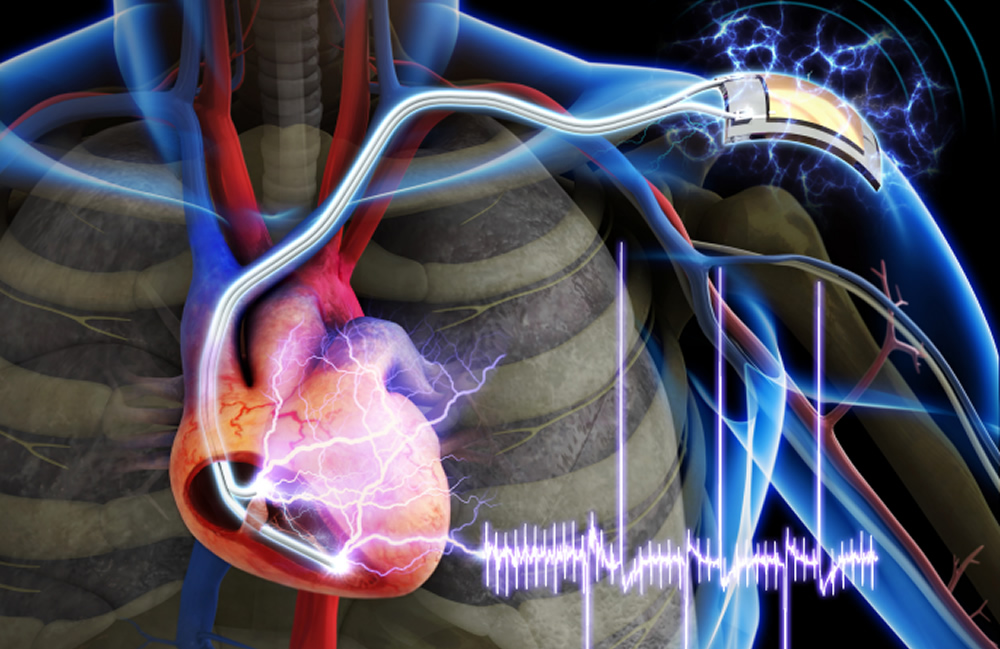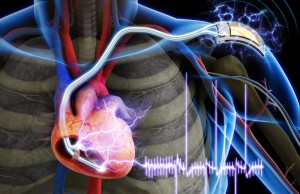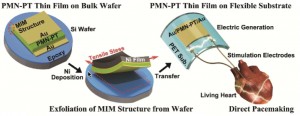June 28, 2014 – In a recently published article in Advanced Materials, Korean researchers at their Advanced Institute of Science and Technology (KAIST) described a cardiac pacemaker requiring no internal power source. Instead a thin-film device harvests energy from body movement allowing it to pace the heart without any external power source.
Recently I wrote about another pacemaker technology that uses electromagnetic waves to charge a miniature pacemaker in a rabbit. The KAIST device was demonstrated in a rat. The energy generated from small body movements by the rat reached 8.2 volts and 0.22 Milli-amperes. Both energy levels were considered sufficient to directly stimulate the rodent’s heart. In the picture above a piezoelectric device is shown powering a human heart pacemaker. The source of energy comes from the harvester, a shoulder patch that transmits energy to the internal device from the slightest movement.
Professor Keon Jae Lee in the Department of Materials Science and Engineering at KAIST is quoted as saying: “For clinical purposes, the current achievement will benefit the development of self-powered cardiac pacemakers as well as prevent heart attacks via the real-time diagnosis of heart arrhythmia.”
Piezoelectric technology is being looked at in a number of 21st century applications including under road surfaces to power highway lighting and signage and to recharging electric vehicles while they are on the go. These piezoelectric devices are, however, large. The schematic illustration of the pacemaker, seen in the illustration below, shows a nano-sized device, far different from its big brother cousins.














